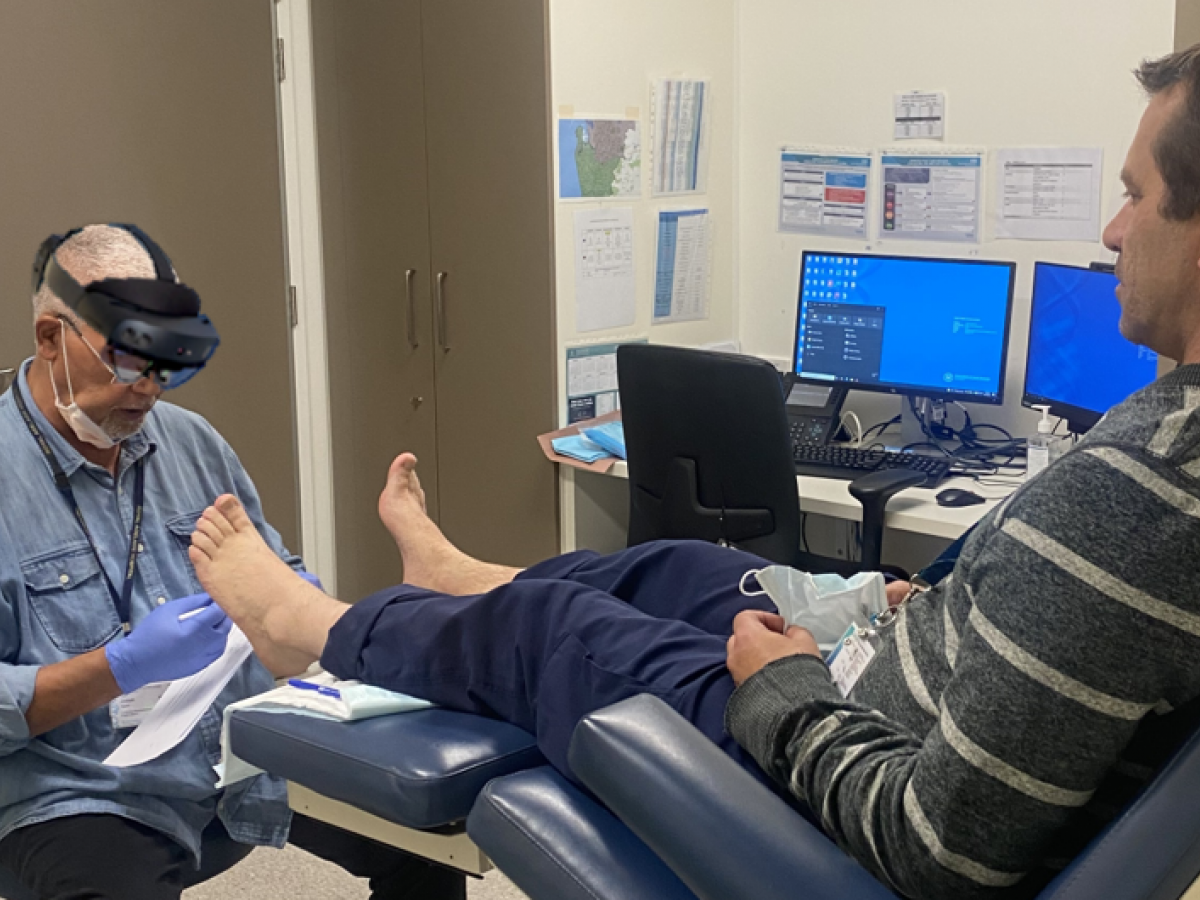
Mixed-reality smart glasses with holographic features are set to revolutionise the treatment of leg and foot wounds for people with diabetes and vascular disease in regional and remote areas in the future.
University of Adelaide researchers are leading the development of new software for a mixed-reality headset that will allow practitioners working in the city to “see through the eyes” of rural health workers in real time as they assess and treat patients’ leg and foot ulcers.
“This new technology will potentially change how wounds are treated and the way telemedicine is practiced,” said the University of Adelaide’s Professor Robert Fitridge from the Adelaide Medical School, who is chief investigator on this study.
“Chronic ulcers on the lower limbs are a common problem and cause significant illness and diminished quality of life. The new software will allow health professionals in different locations to work more closely together, potentially preventing leg and foot amputations and saving lives,” he said.
Current telehealth technology relies on videoconferencing and mobile phone images. This new software will allow the remote health worker to have their hands free for performing necessary procedures such as treating wounds and changing dressings under the direction of a specialist, who will be able to see a live video stream from the remote health worker’s point of view.
“Seeing through the eyes of rural health workers to accurately diagnose and treat wounds will reduce the rates of emergency hospitalisations for rural and regional patients while frequently allowing them to stay in their home communities when they otherwise would have needed to come to a metropolitan hospital,” said Dr Neil McMillan, a researcher at the Adelaide Medical School.
“There is an increasing need for this type of technology as the rates of diabetes and cardiovascular disease continue to rise. Reduced access to health services outside of the city contributes to delayed screening and detection of disease in rural communities, not to mention the financial burden on patients and the health system,” said Dr McMillan.
Diabetes-related foot disease caused an estimated 1700 deaths and more than 5000 lower limb amputations in Australia in 2019/2020 alone.
“The new software will allow health professionals in different locations to work more closely together, potentially preventing leg and foot amputations and saving lives.”Professor Robert Fitridge, Adelaide Medical School, University of Adelaide.
Amputation rates are up to ten times higher in regions outside of metropolitan areas and are a particular problem for Aboriginal and Torres Strait Islander people, who are up to 38 times more likely to undergo amputations associated with diabetes than non-Indigenous Australians.
“We will be able to help train local Aboriginal and non-Aboriginal health workers to assess and treat lower-limb complications using our included mixed-reality education package, which has been specifically designed for cultural safety and relevance to Aboriginal communities,” said Professor Fitridge.
“The specialist will be able to direct the rural health professional, who is wearing mixed-reality glasses, to different aspects of the wound with the help of holographic projections and, in future, even see what the wound looked like at a previous telehealth appointment for easy comparison,” said Dr Zygmunt Szpak from Insight Via Artificial Intelligence, a commercial partner helping to develop the software.
This project is a collaboration between the University of Adelaide, Insight Via Artificial Intelligence, SA Health (Professor Paul Worley, Cathy Loughry, Sharon Wingard) and UniSA (Dr Ancret Szpak, Dr Kristin Graham). “Our project’s success relies on our team’s combined expertise in evidence-based care, advanced technologies, user-experience design, and clinical evaluation,” said Dr McMillan.
The project team has recently received $2.27 million over four years from the Medical Research Future Fund’s National Critical Research Infrastructure Scheme.
It’s expected the smart glasses will be rolled out within the next five years, with early versions of the technology to be tested at selected locations across South Australia from 2024, including clinics in the Riverland, Murray Bridge, and other regional SA sites.






